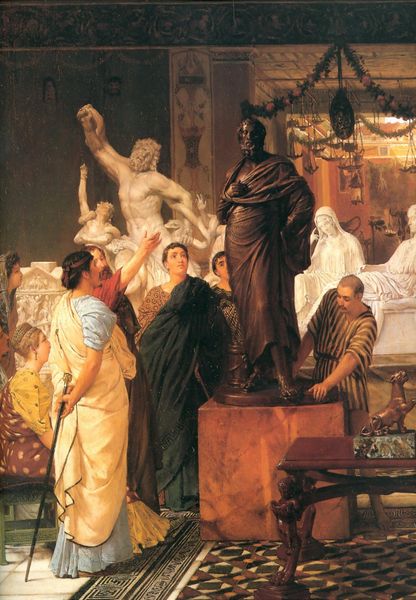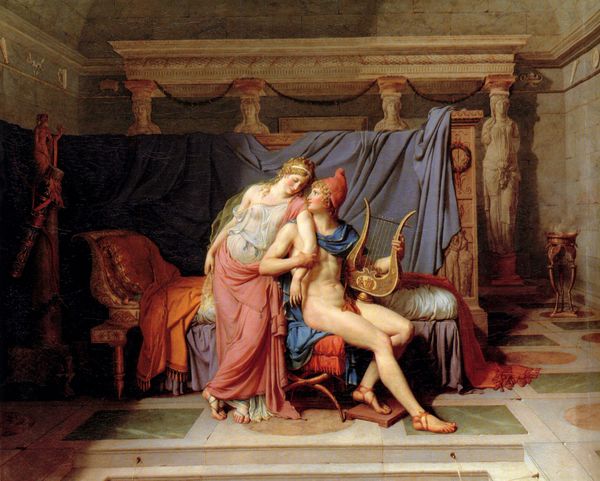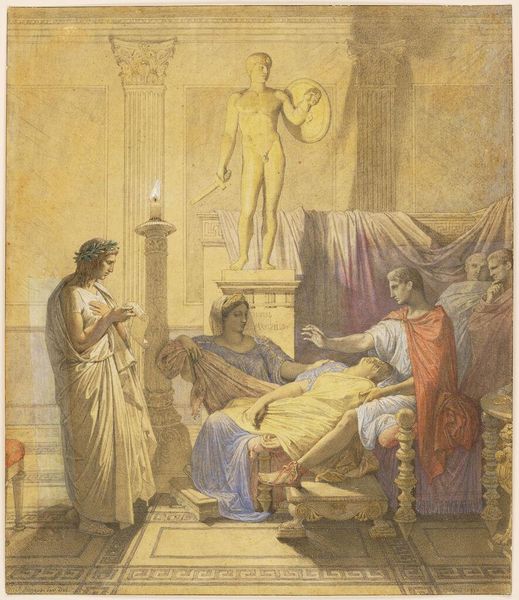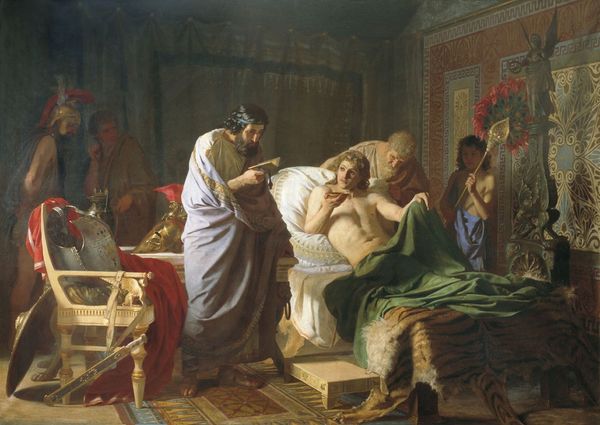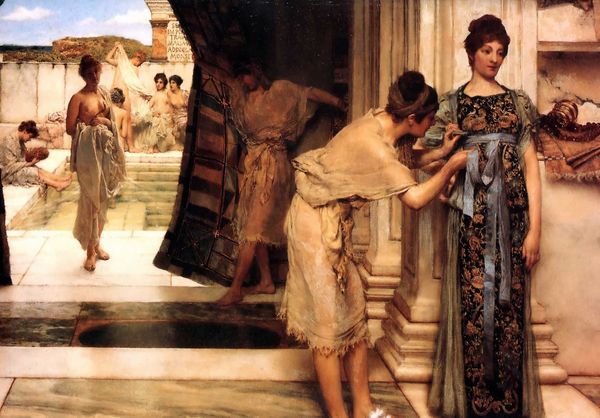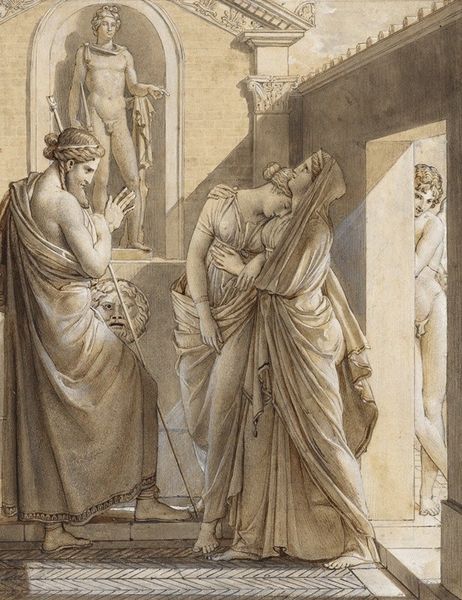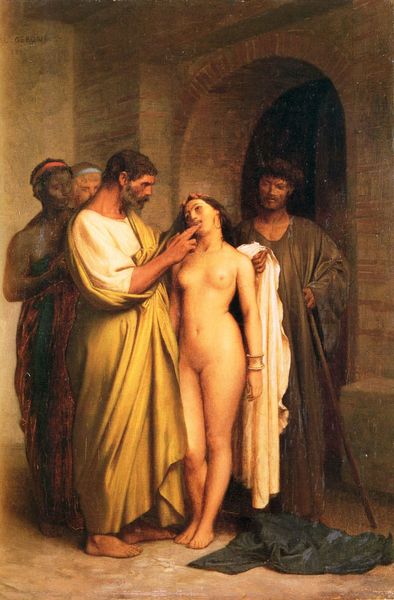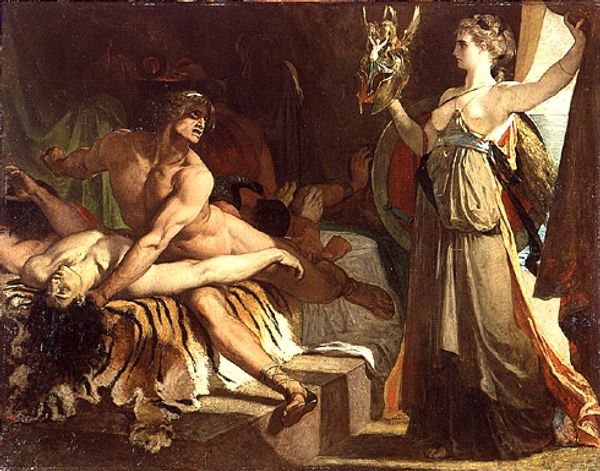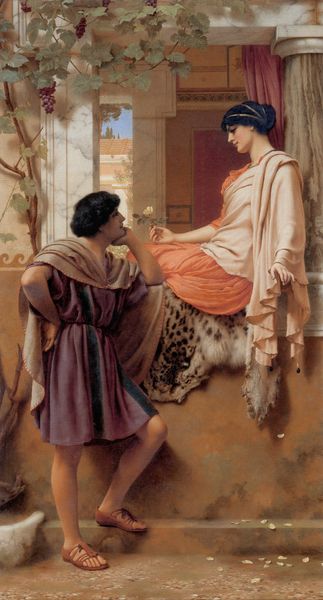
Copyright: Public domain
Editor: So, here we have "The Sculptor's Studio" by Tom Roberts, created in 1885. It's an oil painting showing an artist at work on a sculpture, with a nude model posed nearby. I find the juxtaposition of the artist and the model really striking. What do you see in this piece? Curator: Beyond the surface depiction, I see a commentary on the artist's role and the construction of idealized beauty within a specific historical context. The male gaze is clearly present, positioning the female nude as an object of observation and artistic creation. How does that strike you, given what you know about the period? Editor: Well, I definitely notice the power dynamics. It makes me uncomfortable to think about how frequently female bodies were depicted for the male gaze back then. It does make me wonder about the artist's intent, though. Was he simply following convention or was there perhaps a subtle critique embedded within? Curator: That's the crucial question, isn't it? Roberts painted this during a time when academic art was dominant, and there was an inherent power imbalance between the artist and the model, influenced by class and gender. The setting within the studio and the representation of the nude both signify certain established academic and social structures, and they contribute to complex dialogues about beauty and labor. Does this perspective change how you perceive the composition? Editor: Yes, definitely. I was initially just looking at the surface details. Now I'm considering it more critically, thinking about how the work reproduces social norms, and even perpetuates stereotypes. Thanks, that really gives me a lot to think about. Curator: Precisely. Engaging with art requires that we continually consider its historical context, interrogate the social relations embedded within it, and consider the voices often left out of its narratives.
Comments
No comments
Be the first to comment and join the conversation on the ultimate creative platform.
